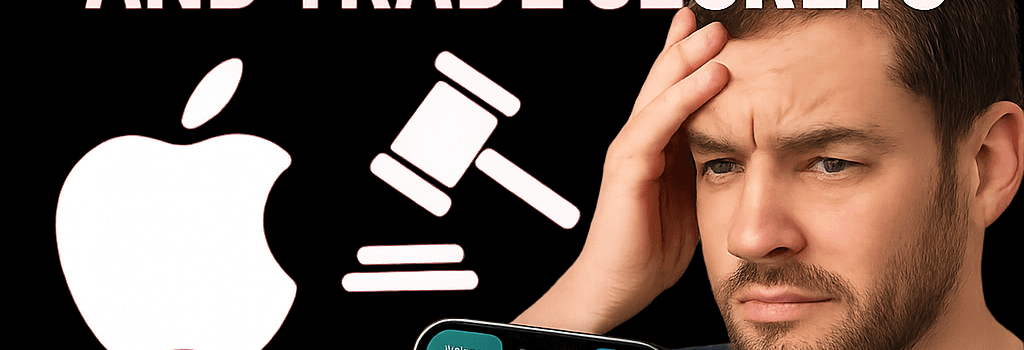Apple Sues YouTuber Over iOS Leak and Trade Secrets

In a case that underscores the tension between tech journalism and corporate secrecy, Apple has filed suit against YouTuber Jon Prosser and associate Michael Ramacciotti, accusing them of leaking trade-secret information about the upcoming iOS 26 software redesign, codenamed Liquid Glass. While leaks have become commonplace in the Apple ecosystem, this is one of the first times the company has pursued legal action so aggressively.
Background: The Liquid Glass Leak
In January 2025, Jon Prosser of Front Page Tech uploaded a video claiming to reveal an early glimpse of iOS 19—which was later officially announced as iOS 26—featuring a translucent, physics-inspired UI Apple dubs “Liquid Glass.” Although Prosser said he could not display the original footage to protect his source, he provided a detailed mock-up of the revamped Camera app. By June, Apple’s Worldwide Developers Conference (WWDC) confirmed the mock-up as part of a system-wide design language overhaul.
The Allegations: Trade Secret Theft
Apple’s complaint, filed in federal court and first shared by MacRumors, alleges a coordinated scheme between Prosser and Ramacciotti. The suit contends that Ramacciotti, a friend of Apple engineer Ethan Lipnik, physically accessed Lipnik’s company-owned iPhone running a pre-release build of iOS 26. He then used FaceTime to stream the UI to Prosser, who published the content on YouTube for ad revenue.
“Defendants’ misconduct was brazen and egregious,” Apple’s filing reads. “They jointly planned to access Apple’s confidential and trade secret information through Mr. Lipnik’s Apple-owned development iPhone.”
Key points from the complaint include:
- Ramacciotti gained unsupervised access to a development device belonging to Lipnik.
- He streamed pre-release software design elements to Prosser via FaceTime.
- Prosser profited by publishing detailed leak videos, including promises of even bigger leaks.
- Apple claims additional confidential features remained on the device and thus at risk.
Prosser’s Defense: Disputing Apple’s Timeline
Prosser has publicly rejected Apple’s version of events. Posting on social media, he asserted, “I did not ‘plot’ to access anyone’s phone. I did not have any passwords and was unaware of how the information was obtained.” To support his stance, Prosser released a February-dated screenshot from an encrypted messaging app showing an unsolicited packet of design assets.
Technical Breakdown: Inside Liquid Glass
Apple’s “Liquid Glass” introduces a multilayered translucency effect leveraging Core Animation and Metal. Key technical specs include:
- Dynamic Blur Pipeline: A custom Metal compute shader applies variable Gaussian blur in real time, blending UI layers to simulate fluidity.
- Adaptive Particle System: Uses SpriteKit-driven particles for interactive background animations that react to user input and system events.
- Unified Material Engine: Extends UIKit’s material system with new material types, including “Chromatic Float” for subtle color shifts under different lighting conditions.
- Performance Optimization: Offloads heavy compositing tasks to the A17 Pro’s NPU to maintain 120 fps on supported devices while minimizing power draw.
These enhancements underscore Apple’s continued investment in high-performance, GPU-accelerated UI rendering.
Legal Analysis: Trade Secret Protections and NDA Enforcement
Under the Defend Trade Secrets Act (DTSA) and Apple’s strict Non-Disclosure Agreements (NDAs), unauthorized disclosure of pre-release software is prosecutable. Legal experts note:
- Trade secrets must derive independent economic value from not being publicly known; Apple’s design innovations fit this definition.
- Apple’s developer agreements impose criminal and civil penalties for leaks, including immediate termination and possible injunctions.
- Earlier cases—such as the 2019 leak of Apple’s autonomous car code—set precedents where the company secured injunctions and financial penalties.
Industry Impact: Risks and Best Practices for Developers
This lawsuit sends a clear message to in-house and third-party developers working on confidential projects:
- Strictly segregate personal and development devices; never store pre-release builds on personal hardware.
- Use Apple’s enterprise Mobile Device Management (MDM) tools to enforce encryption and remote wipe policies.
- Maintain thorough audit logs and device inventories to track who accessed sensitive builds.
- Educate teams on legal obligations under the DTSA and company NDAs.
Expert Opinions
UI Designer Jane Park: “Liquid Glass represents a logical progression of Apple’s material design language. The real challenge will be balancing visual fidelity with battery life on older devices.”
Trade Secret Attorney Luis Ramirez: “Apple’s decision to sue indicates they believe Prosser’s actions went beyond normal journalism. If proven, this could deter other leakers but also raises First Amendment considerations around reporting on unreleased tech.”
Next Steps and Outlook
Apple is seeking both monetary damages and an injunction to prevent further disclosures. Although iOS 26 and its Liquid Glass design are now public, Apple argues that other confidential features—such as internal telemetry dashboards and next-generation AR interfaces—remain vulnerable.
The case is scheduled for initial hearings later this year. Industry watchers will be paying close attention: a ruling in Apple’s favor could reshape the boundaries of tech reporting and leak culture.